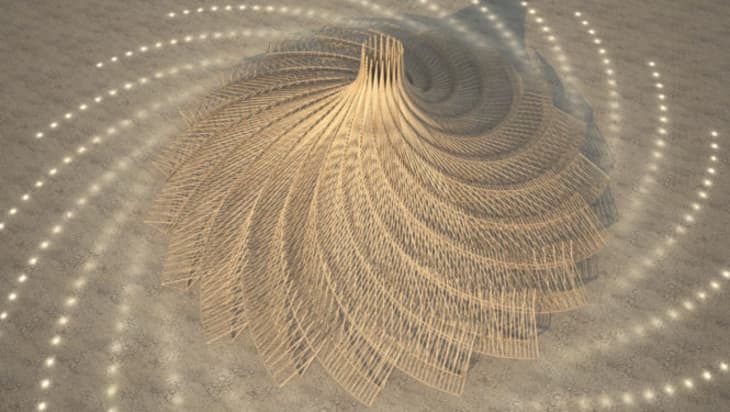Burning Man Just Unveiled The Design For This Year’s Temple And It’s Breathtaking

We may be the throes of winter—and a good portion of the country even thawing out from a bomb cyclone snow storm—but believe it or not the gear-up to Burning Man is officially upon us. Yep, the latest design for the annual event’s signature temple has been unveiled.
The dusty gathering where, for one week festival-goers turn the Nevada desert into a self-sufficient, zero-waste temporary city, always boasts a magnificent work of pop-up architecture at its center.
Whether you’re a burner or simply a fan of incredible art and architecture, you’ll be interested to know that this year’s temple is the brainchild of Arthur Mamou-Mani, a London-based French architect and director of Mamou-Mani Architects. The fact that Marmou-Mani is from outside the US, according to the Burning Man Arts Team, reflects the increasingly global nature of the Burning Man community. His temple design, known as Galaxia, “celebrates hope in the unknown, stars, planets, black holes, the movement uniting us in swirling galaxies of dreams,” according to the Burning Man website.
As such Mamou-Mani’s design itself gives the appearance that it is swirling, continuously in motion; the temple is made up of 20 timber trusses that are all spiraling upwards, joining together at a central point. Within the center of the temple sits a giant 3D-printed mandala, a geometric pattern common in Hinduism and Buddhism which represents the universe. As festival-goers make their way through the structure to the central mandala, they’ll find that the timbers closest to the exterior boast alcoves big enough sit in, write in, meditate in, or no doubt, take epic selfies in.
Mamou-Mani and his designs are no stranger to the Burning Man festival; the architect’s installations have been showcased at the gathering for the last six years. In fact, one such structure, entitled Tangential Dreams, actually won the Architizer A+ Award in architecture in 2016.
h/t Burning Man